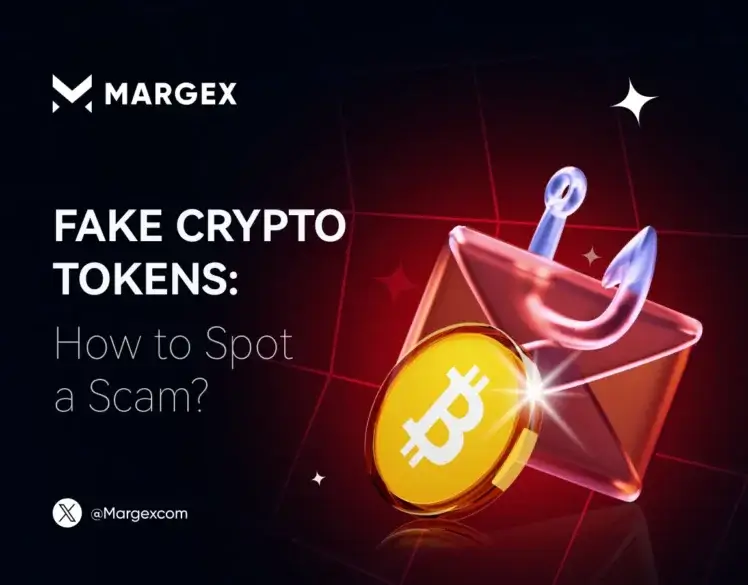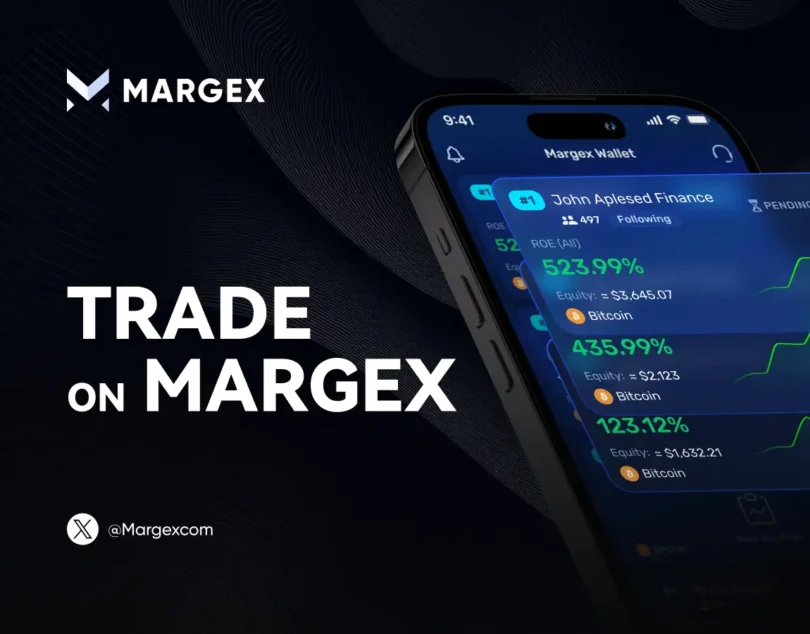Fake Crypto Tokens: How to Spot and Avoid Crypto Scams in 2025

The marketing of fake tokens has emerged as a major concern for investors. These deceptive assets bluff as legitimate cryptocurrencies but are designed to defraud unsuspecting participants. Understanding how to identify a fake token, distinguish it from a genuine project, and protect your funds is crucial for anyone venturing into the crypto space. This comprehensive guide delves into the anatomy of scam tokens, explores real-world examples, provides actionable red flags, and offers best practices to ensure you’re not caught in a pump and dump scheme or fall victim to false tokens.
Defining Fake, Scam, and False Tokens
Such tokens which are created to deceive, without valid utility and are mostly developed to drain investors’ funds. Rather, they commonly rebrand themselves following that of popular projects sans any mentality of whatever team or roadmap they make.
Fake tokens on the other hand, involve dirty tricks that are meant to ruin projects, that either offer unrealistic returns, or deceptive marketing, to entice buyers.
When we say false tokens coins that are listed in the exchange or DeFi platform without proper vetting, it has an aura of legitimacy. This knowledge allows investors to distinguish between risky ventures and, frankly, outright fraud.
Why Fake Tokens Get Spike?
One of the biggest risks associated with the crypto space comes down to anywhere from four to five letters. Tokens are easy to create and promote for malicious actors. For example, in using Bitcoin or other blockchains, the barrier to entry was next to nil while the creation of a token on Ethereum or BNB Smart Chain could cost as little as a few dollars in gas. It is extremely affordable, which makes the scammers create multiple fake tokens in a very short period and cause major cryptocurrency investment and withdrawal scams.
Added to that, decentralized exchanges (DEXes) such as Uniswap and PancakeSwap let people list tokens without thorough vetting or onboarding steps. The result is that the market is filled with fraudulent tokens.
Social media hype and influencers are also used by scammers. Most often, they have phony endorsements or hire influencers to peddle their tokens to hype up the Telegram or Discord groups to make other unsuspecting investors fall in line. As is usually the case, this hype is part of pump and dump schemes where a group coordinates to purchase a token at a low price, hype it to push the market forward, and then sells off once the price has gone up, leaving others behind with worthless tokens and massive losses.
How to Spot a Crypto or Fake Token Scam?
No Real Utility or Product
The biggest warning sign of any crypto project is if there is no use case. If the token does nothing other than being a pump and dump scheme or some new meme coin that has no end in sight, then you are probably dealing with a scam mint. Hype can make all the difference, yet hype chases fast, leaving behind worthless tokens.
Anonymous Team
Lack of openness with the team (not open to the public at least), is a sign of illegitimacy. A serious red flag is if the developers are hiding behind fake names and have no information about them online. The legitimate teams usually have a verifiable LinkedIn profile or track record in the blockchain space. If there’s nothing about the team at all, approach with caution.
No Audit or KYC
Adding credibility of the smart contract code not being exploitable through the review of the code by a trusted firm such as Certik or SolidProof would add smart contract audits. Also, a project that finished KYC (Know Your Customer) verification on Pinksale, is transparent to a basic level. Moving past these 2 steps, or if to have any suspicious code such as minting functions or an unrenounced ownership, it’s best to stay away.
Too-Good-To-Be-True Rewards
Major red flag is the promises of major returns, for example, “12000% APY”, or the guaranteed “10x” gain (never make any damn sure bet). Usually, these claims are bait for inexperienced investors. Real gains come with real risk and time, not showy, meaningless percentages designed to get people in quickly before the dump.
Hyped Marketing with No Substance
Be wary of projects aggressively marketed on platforms like Telegram, X (Twitter), or YouTube, especially when there’s no working product to back up the hype. Empty promotions and influencer shills without any utility behind the token are classic signs of a pump-and-dump scheme.
No Liquidity Lock or Rugpull Risks
Liquidity locks are essential for protecting investors. If a project’s liquidity isn’t locked on platforms like Unicrypt or Team.finance, the developers can pull the funds at any moment—commonly referred to as a rugpull. Always check for a liquidity lock before investing.
Fake Community or Bots
A healthy sign includes an active and genuine community. However, if a project’s Telegram group is littered with spam and bots, or its Twitter account is riddled with thousands of fake followers and very little real interaction, then it’s probably all for show. Follower count doesn’t matter more than engagement.
In investing into every crypto project, make sure you always do your own research. Early spotting of these red flags can save you from falling in traps of scams and the hype.
Key Red Flags of a Scam Token
| Category | Red Flag | Explanation |
|---|---|---|
| Team | Anonymous Team & No Audit | Creators hidden, no real audit. |
| Code | Unverified Contract Code | Code may hide scam functions. |
| Liquidity | Unlocked Liquidity | Developers can pull all funds. |
| Marketing | Unrealistic Promises | “1000× gains” = clear scam. |
| Website | Poor Docs & Design | Typos, broken links, poor quality. |
| Tokenomics | Bad Tokenomics | Excessive supply, big team share. |
| Community | Dead or Fake Community | Inactive socials = bad sign. |
Tools & Techniques to Verify Tokens
| Category | Tool | Explanation |
|---|---|---|
| Explorer | Block Explorer | Check contract, wallets, code. |
| Scam Check | Token Sniffer | Detects malicious token patterns. |
| Liquidity | Unicrypt | Shows if liquidity is locked. |
| Audit | CertiK, PeckShield | Verify only from official site. |
| Socials | Social Verification | Check real links on website. |
Case Studies: Recent Fake Token Scams
$LIBRA (Feb 2025)
Backed by Argentina’s President Milei. Price surged on promo, then crashed. Insiders allegedly profited $87M before collapse.
Compounder Finance (cBSQ)
This scam token was kicked off on a DeFi craze, where it was promising automatic yield aggregation. Under its contract, it had unlimited token minting, causing hyperinflation, and falling within days.
$MELANIA (Jan 2025)
Memecoin tied to Melania Trump. Insiders pre-bought $2.6M worth, dumped post-launch for $100M. Classic insider pump and dump.
MANTRA DAO ($OM) – April 2025
OM token crashed over 90% in hours, dropping from $6.3 to under $0.50. The team attributed the collapse to forced liquidations, but investors suspected insider dumping. The incident erased over $6 billion in market value.
Preventing Exposure to Fake Crypto Tokens
If anyone wants to prevent scams in the cryptosphere, follow these safety steps. Never invest blindly and DYOR (Do Your Research). Read the whitepaper, audit reports, and roadmap of the project with complete detail and carefully read them to know about its legitimacy and the plans about it. When in doubt, always check over all links and only use official sources, shown in CoinMarketCap, CoinGecko or confirmed by the project’s verified website to avoid from crypto scammers.
When buying tokens, avoid buying tokens from untrustworthy platforms like Pinksale, Gempad or any well known decentralized and centralized exchanges. Don’t let scammers capitalize with FOMO (Fear of Missing Out) by making you feel there’s a sense of urgency. Look into the opportunity and take your time. I will also warn you of how tokens can be trapped. If a token allows you to buy but prevents you from selling, otherwise known as a honeypot, this is a hard pass to a scam.
Conclusion
As a result, there is a need for attentiveness in the crypto space, since the rise of fake tokens, scam tokens and false tokens. Investors will be able to travel safely in this landscape by understanding common red flags, using on-chain analysis tools, and keeping up to date on continuous education. To prevent your portfolio from fraudsters, the most important thing is to stay vigilant, especially during pre-sale phases, and diversify your investments. Remember: Whenever a token promises unrealistic high returns and has no credible backer, then it’s surely too good to be true.
FAQ
What are fake tokens?
Fake tokens are cryptocurrencies created with the intention to defraud investors. They mimic legitimate projects’ branding, use unverified contract codes, and often exit-scam removing liquidity and leaving holders with worthless assets.
What is a false token?
A false token appears on exchanges or DeFi platforms without undergoing rigorous validation. While not always malicious, false tokens lack transparency around their team, audits, or utility, making them high-risk for investors.
How to check fake coins?
- Verify contract code on explorers like Etherscan.
- Confirm liquidity lock status.
- Review audit reports from CertiK, PeckShield, or reputable firms.
- Inspect tokenomics for disproportionate team allocations.
- Use community-driven tools like TokenSniffer to detect malicious functions.



